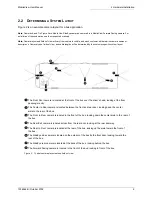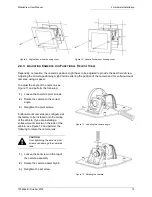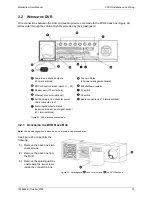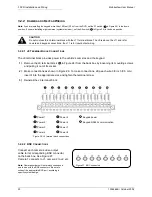
2 Hardware Installation
MobileView User Manual
10
1036564B / October 2002
2.3 R
UNNING
C
AMERA
C
ABLES
CAUTION
When installing cables, follow these guidelines:
Avoid excessive lengths of cable at the control and device end. Excess cable should be pulled back to a
duct area where it can be folded and secured. Leave a service loop as directed for specific devices.
Cables should not come into contact with bare metal edges, light ballasts, or magnetic speaker coils. If
ballasts and speaker coils cannot be avoided, cross them perpendicularly.
Cables that are secured with cable-ties should not be tightened to the extent that the cable is
compressed or damaged. The cables should not be crimped, crushed, or severely bent.
When passing cables through tapping plates or metal sidewalls of the vehicle
,
if possible,
insert
grommets in the holes to protect the cable. If it is not possible, make sure that the protective outer CL2
jacket is maintained when passing the cable through the hole.
When pulling cable through the conduit, do not jerk or over-pull the cables. These actions will stretch
and damage the cable. Attach a pull-line to the cable jacket, not to the connectors.
1)
Route cables from each camera location to the DVR location as determined by your customer-
specific system layout. Figure 3 shows an example system layout.
2)
If cables must be pulled through vehicle walls with limited access or conduit, attach pull lines to the
cables jackets, and gently pull cables through the appropriate routing paths.
3)
After reaching camera locations, leave enough cable for a 6-inch (152 mm) service loop at each
location.
4)
Pull any excess cable back into the duct area where it can be folded and secured.
Figure 3. Typical camera cabling layout
DVR location
Содержание MobileView
Страница 1: ...MobileView Mobile Digital Video Recorder ...
Страница 42: ...42 1036564B October 2002 ...
Страница 44: ...44 1036564B October 2002 ...
Страница 50: ...50 1036564B October 2002 ...
Страница 52: ......











































